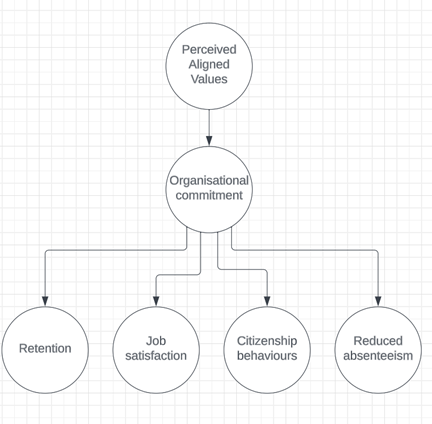
The Value of Values
There is more than meets the eye when it comes to organisational values.
Often considered as lofty ideals or the icing on the cake, organisational values are much more, they are the bedrock of an organisation. Organisational values not only set the tone for the whole organisation, but they also provide a way to execute strategic direction and most importantly, guide its people.
Organisational values refer to unspoken and broad qualities that guide the behaviours of individuals at work (Chatman, 1989). They are collective beliefs about what the entire organisation stands for, takes pride in, and holds of value (Schein, 1985).
Values comprise of four aspects:
1. They are concepts or beliefs
- going beyond mere words and embodies what an organisation stands for.
2. They contribute to desirable behaviours that rise above specific situations
- help steer the actions of individuals and groups.
3. They guide selection or evaluation of behaviour and events
- serve as a compass
4. Are ordered by relative importance
- help to convey what’s most important to you and your organisation.
Imagine values much like a lighthouse, guiding us through calm and treacherous waters. With the organisation as the ship and the crew as the employees, values help guide where we are, where we need to be, and where not to be. If the captain of ship is not on the same page as the rest of the crew, the ship risks not reaching its destination.
Just like ships and their crew, values must be aligned across the organisation to function optimally. Values help bind an organisation together, thus producing a culture conducive of working towards a common goal (Fitzgerald & Desjardins, 2004).
Research suggests that among many benefits, organisations that develop a culture where values are shared deepen the level of employee-organisation integration and improve organisational commitment (the degree that employees like their organisation) (Agarwal & Sagar, 2012).

With organisations that exude high organisation commitment experiencing reduced turnover and absenteeism, improved job satisfaction and employee citizenship behaviours (defined as ‘going the extra mile’), value alignment is a great place to start for aspiring high performing organisations (Fitzgerald & Desjardins, 2004).
The relationship between organisational values, organisational commitment and outcomes can be seen in the diagram below:

Tips for Organisations on Cultivating Values
Living and breathing values throughout the entire organisation is no small feat, requiring continuous effort and nurturing from both managers and employees. What is clear, however, is that managers who don’t take values into account are less effective than managers that do take values into account (Argandoña, 2003).
Organisations of all sizes can reap the benefits of organisational values by:
- When selecting values, listen to what’s important to employees about their work. Values should be genuinely held by all members of the organisation.
- Aim for values that are underpinned by benevolence (welfare of people), self-direction (independence and autonomy) and universalism (understanding and appreciation for the welfare of all people)
- Keep organisational values front of mind when considering long-term strategies.
- Ensure supervisors are practicing what they preach (when employees and their immediate supervisor’s values are congruent, outcomes such as job satisfaction and organisational commitment are supercharged) (Fitzgerald & Desjardins, 2004).
- Use organisational values to shape distinctive competencies you would like to see in employees
- Clearly define, describe and use organisational values in all decision-making processes.
Learn more
If you would like to know more, please contact us and one of our Workplace Strategists will be in touch within 24 hours.
References
Allen, N. J., & Meyer, J. P. (1996). Affective, continuance, and normative commitment to the organization: An examination of construct validity. Journal of vocational behavior, 49(3), 252-276.
Agarwal P., & Sagar, P. (2012). The impact of person–organization value congruence on organizational commitment in a public sector organization. International Journal of Research in Commerce & Management, 3(9).
Argandoña, A. (2003). Fostering values in organizations. Journal of Business Ethics, 45, 15-28.
Chatman, J. A. (1989). Improving interactional organizational research: A model of person-organization fit. Academy of management Review, 14(3), 333-349.
Fitzgerald, G. A., & Desjardins, N. M. (2004). Organizational values and their relation to organizational performance outcomes. Atlantic Journal of Communication, 12(3), 121-145.
Schein, E. H. (1994). Innovative cultures and organizations. Information technology and the corporation of the 1990s: Research studies, 125-146.

